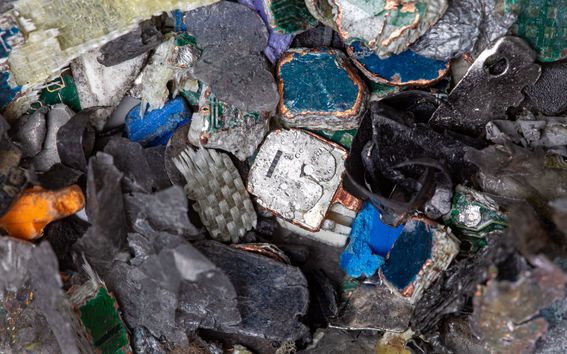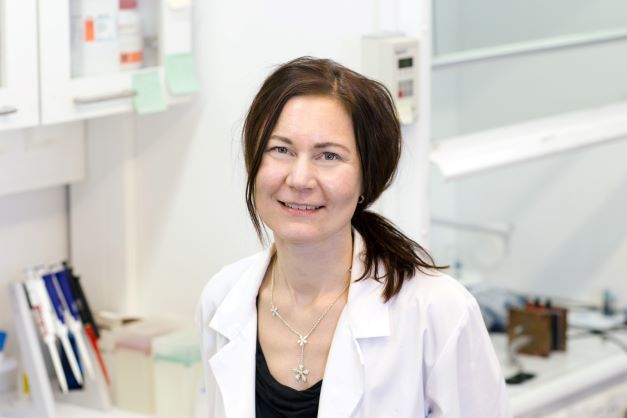Five things decision-makers should know about the electrification of society

There is a shortage of metals – and access to them involves geopolitical risks
Demand for metals needed for electrification is already growing dramatically. The International Energy Agency (IEA) estimates that, for example, demand for lithium, the basic raw material for electric cars, will increase more than 40-fold by 2040.
Lithium and many other metals needed for electrification, such as rare earth metals, are processed in very small amounts within the European Union. In particular, with regard to the production and processing of rare earths, Europe is still fully dependent on China, which must be taken into account if European societies want to detach themselves from fossil fuels.
Electrification also increases demand for common metals such as copper and aluminium
Electrification requires many kinds of metals. For example, turning the kinetic energy of the blades of a wind power plant into electricity requires permanent magnets, containing iron, boron, and rare earth metals, such as neodymium and terbium. The electrification of societies also increases demand for copper and aluminium. For example, the electricity produced by an offshore wind power plant moves along the bottom of the sea to land through a copper cable the thickness of a log, and each electric car requires four times more copper than a car powered by an internal combustion engine does.
Population growth will further increase consumption – the needs for the use of raw materials must be prioritised
The world population is projected to grow to 9.7 billion by 2050. The growing population needs a cleaner environment and electricity from renewable sources. And, as the standard of living rises, more and more people will also purchase smartphones, electric cars, and household appliances.
This all consumes energy and metals. That is why we need to prioritize their use. What do we want to use the limited raw material resources for: electric scooters or production plants for renewable energy?
Recycling does not solve the metal shortage – and the mining boom is not enough to meet demand either
In the next few years, the recycling rate of electronic waste will not rise higher than to around 20%. It will take about ten years before the batteries of electric cars are recycled to any significant extent, and even then, the materials recovered from them will cover an estimated one fifth of the consumption.
In other words, demand for the most important metals is growing much faster than their recycled volume. The circular economy of metals will not offer an alternative to mining for a long time to come. That is why mining activity must be increased, and therefore we are in for a global boom in mining.
Even if mining activity were increased significantly from the current level, it is unlikely for this increase to take place within the timetable required by climate change mitigation. Setting up a mine can easily take 10–25 years from when a sufficiently viable deposit is identified.
Mining activities always affect the state of the environment and natural diversity, and on a global scale they also involve many social problems. Solving the challenges of electrification is therefore not just a scientific question: it requires extensive societal debate.
Finland has world-leading competence in metallurgy – and it is needed to solve problems related to electrification
To be able to produce and store renewable energy, we must solve the challenges related to critical raw materials and the life cycle of machinery and equipment.
Finland has both top expertise related to metals and metal production. We process cobalt, nickel, copper and gold and we have the second largest zinc production plant in Europe. A recycling facility for batteries will also be set up in Finland, and, under Aalto University and Metso, Finland coordinates research related to battery recycling at European level. The EU has estimated that the value of the European battery market could reach EUR 250 billion by 2025. Finland's share of the total could be several billions, thanks to our high competence, and close collaboration between research institutes and companies.
For example, Aalto University is studying how the amounts of critical metals used for lithium-ion batteries could be reduced and how their service life could be extended by coating their components applying the Finnish ALD technology. The use of end-of-life scrap containing metal as an additional raw material in metal manufacturing processes is also at the core of research.

- Published:
- Updated:
Read more news

What makes nature restorative? Aalto University researchers explore Finnish forests and Japanese gardens
Biodiversity is central to the restorative power of Finnish forests.
New technology brings immersive audio to everyone’s pockets
A new type of sound recording technology allows recording of immersive soundscapes with ordinary microphones and an inexpensive accessory
Funding for a democratic transition to sustainability
Three projects from Aalto University are among the recipients. The Nessling Foundation's grants aim to advance the implementation of sustainability transitions in the context of democracy, the EU, and nature conservation areas.